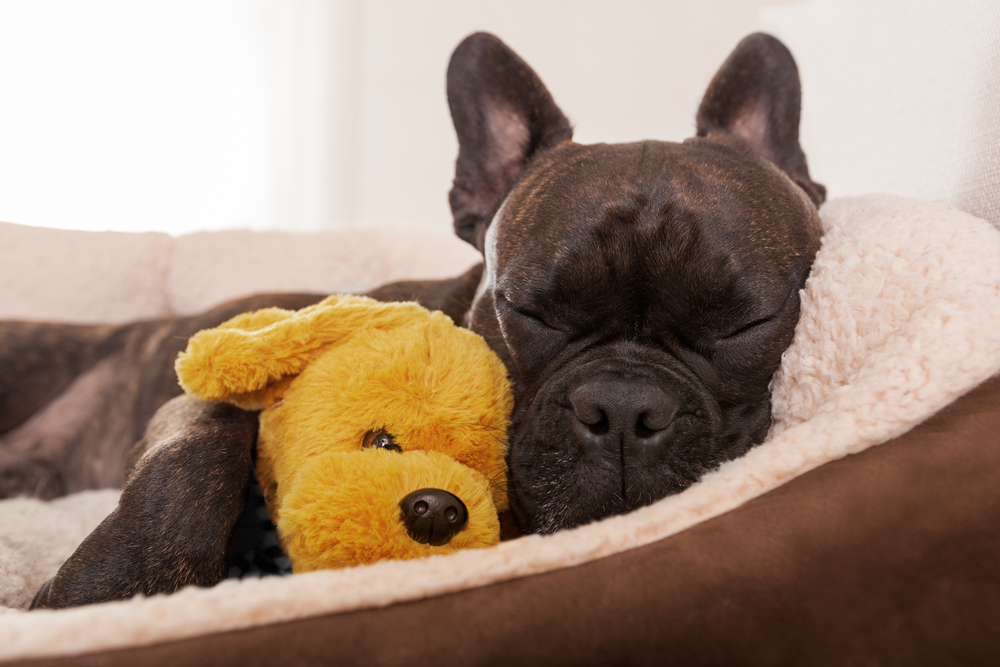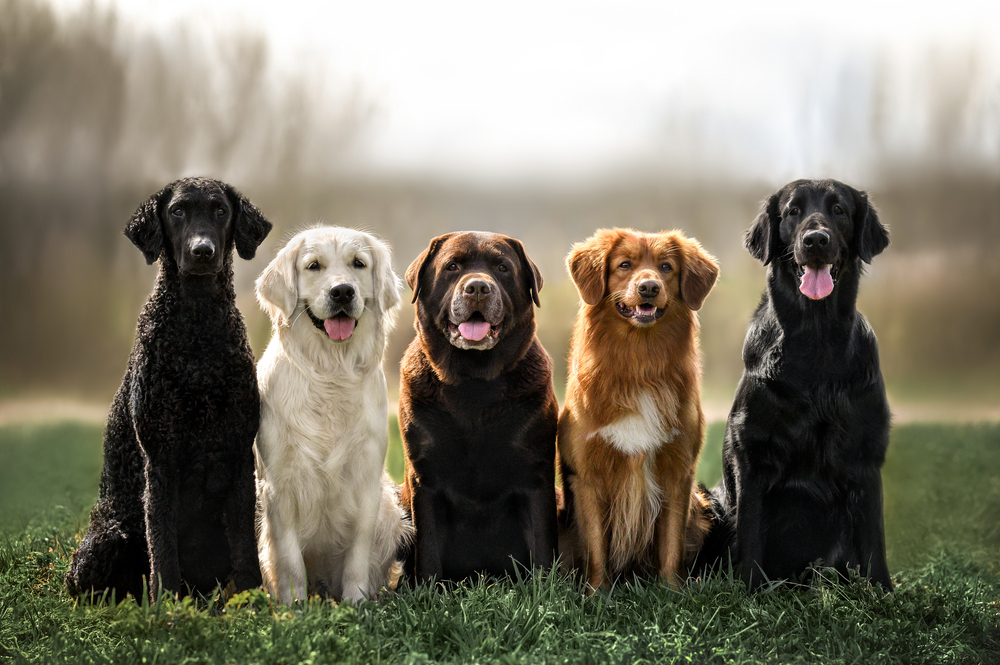Best Bed for your Dog Breed

Like us, dogs appreciate a comfortable place to sleep and rest. Depending on their personality, breed, age, health, and other factors, dogs generally sleep from 12 to 18 hours in a 24-hour period.
Dogs have their own unique habits and personalities, including sleep and rest patterns, which can be related to their breed. Giving your dog a bed of his own gives him his own dedicated place to relax and chill out.
When looking for a suitable bed for your pooch, a huge range is available in various shapes, styles, prices, sizes, and materials. The choice can be overwhelming!
To find the best bed for your dog’s breed, there are a few points to keep in mind, including comfort, size, durability, your dog’s age and health, and whether Fido’s bed will be inside or outside (or both).

Indestructible dog beds
A durable dog bed will be sturdy and long-lasting and worth the investment if it costs more initially, particularly if you have a dog who is prone to chewing and generally being destructive!
Chew proof dog beds can be particularly useful for puppies or dogs who are prone to chewing everything in sight – even if it’s their own comfortable bed they’re keen to destroy!
Standard dog beds should withhold some amount of chewing, but specific chew resistant dog beds may be the way to go if you have a heavy chewer on your hands! These types of indestructible, chew-proof beds are made of robust, heavy materials such as denim, knitted fabric, or ballistic nylon.
Raised or elevated dog beds are usually made from durable shade-cloth or hessian and are steel-framed, making them sturdy, easy to clean, indestructible, and great for outdoor dogs.
A good quality, orthopaedic memory foam dog bed also offers quite a good level of durability and is great for dogs with joint or muscle issues.
Appropriate size bed for your dog’s breed
Whatever your dog’s breed, choose a dog bed that is an appropriate size for him. Whether your dog is a large, medium, small or toy breed, it’s important to choose a bed to suit their size. Your dog should be able to curl up, stretch out on his side, and lie flat on his bed without hanging over the edge. Try measuring your dog’s full body length, from nose to tail, to choose the right size bed. Many dog beds will also offer guidelines on the size and breed of dog suitable for the type of bed.
Your large or mid-sized breed dog may suit a raised bed outdoors, for example, whereas a smaller dog may love a ‘snuggle,’ ‘doughnut,’ or ‘nesting’ bed.
Calming dog beds are particularly great for dogs prone to anxiety, which may include breeds such as Dalmatian, Border Collie, Chihuahua, Cocker Spaniel, and Basset Hound, amongst others.
Cooling dog beds are great for all dogs, but dog breeds particularly susceptible to overheating may include Pugs, French Bulldogs, and Chow Chows.

Larger bed for larger breeds, such as:
• German Shepherd (Alsatian)
• Golden Retriever
• Labrador
• Rottweiler
• Dobermann
• Australian Shepherd
• Siberian Husky
• Alaskan Malamute
• Samoyed
• German Shepherd (Alsatian)
• Greyhound
Mid-sized bed for medium-sized breeds, such as:
• Border Collie
• Beagle
• Australian Cattle Dog
• Kelpie
• Staffordshire Bull Terrier
• Cocker Spaniel
Smaller bed for smaller and toy breeds, such as:
• Chihuahua
• Scottish Terrier
• Maltese Shih Tzu
• Toy Poodle
• Papillon
• Jack Russell Terrier
• Cavalier King Charles Spaniel
Remember, the best dog bed for your dog is one that is comfortable and supports your dog’s entire body.
For dogs with joint problems, arthritis, and hip dysplasia, such as senior dogs, a supportive, comfortable dog bed that is the right size for your dog can help to provide pain relief and promote comfort – both for naps during the day and solid periods of sleep at night.
Calming dog beds
If your dog is prone to anxiety, a comforting dog bed may be helpful. Calming dog beds are designed to help ease stress and anxiousness in dogs by giving them a sense of security. Anxiety dog beds work best when used alongside training and possibly even medication.
There is a range of calming, anti-anxiety dog beds available, which may be suitable for your dog’s particular breed and personality. Types of calming dog beds include self-heating dog beds, beds with orthopaedic padding (great to relieve joint pain in senior dogs), beds with raised edges to support your dog’s body, doughnut style or ‘snuggle’ beds that allow dogs to curl up inside their bed (perfect for small and toy dog breeds), and cave style beds, giving dogs an area to burrow into.
Puppies and small or toy breeds in particular like to feel secure, and a cosy bed that cushions their body encourages them to get to sleep and stay asleep.
Cooling dog beds
Cooling dog beds can be great for all types of dog breeds, particularly in the warm summer months or when your dog’s body is warm after exercising.
Cooling dog beds can be especially beneficial for dog breeds with thick fur, such as Alaskan Malamutes, Newfoundlands, Old English Sheepdogs, and Bernese Mountain Dogs.
Regardless of your dog’s breed and the type of bed you invest in, it’s a good idea to keep the following in mind when making your purchase:
• Easy to clean - such as a removable, washable cover. Regularly washing your mate’s dog bed will be more pleasant for your dog and will minimise germs, hair, and doggy aromas!
• Odour resistant – some materials are less prone to retaining odour than others.
• Waterproof lining – allows for easier cleaning and offers your pooch a dry, comfortable bed.nd small or toy breeds in particular like to feel secure, and a cosy bed that cushions their body encourages them to get to sleep and stay asleep.
• Appropriate size – there is a huge range of dog breeds and they all come in different shapes and sizes. Your dog needs a bed that is big enough for him to stretch out and circle around in but is still comforting.
• Non-slip – your dog may become nervy if the underneath of his bed is slippery.
• Portable and lightweight – if you plan on taking it with you for your dog’s comfort when travelling or on an outing
It may take a while for your dog or puppy to get used to his new bed. Try sitting or lying on the bed with them, putting a food treat or your dog’s favourite toy or ball on the bed, and praising them when they do use the bed for sitting or lying on.
Even dogs of the same breed have their own likes, dislikes, and personalities, and finding a bed your dog loves is not always a one-size-fits-all solution, but when you do, your canine friend is sure to love a bed of his own where he can sleep, relax, and just generally chill out!
Popular Questions Asked
What type of bed is best for your dog?
To find the best dog bed for your dog breed, multiple things need to be considered. You need to keep in. mind, including comfort, the size, durability, your dog’s age and health.
Do dogs prefer a hard or soft bed?
Most dogs prefer hard beds, and yes, hard beds are a better option as soft beds don’t offer the support needed for comfortable rest and healthy joints. For example, and older dog with joint problems such as arthritis and may find it difficult to get out of a plush bed.
How can I keep my dogs bed cold?
Different cooling beds have different ways of keeping cool. Some cooling beds contain a substance that is pressure activated where the gel beads are activated by weight when your dog lie on it. The gel then recharges and chills when they aren’t using it. Other dog beds use cold water that absorbs then redistributes your dog’s body heat.
Do dogs need a special bed?
It is preferred that they do have a special bed such as an orthopaedic bed as it does aid and support joint and bone growth, as well as support joints in older dogs too. If you are willing to spend the money, then orthopaedic dog beds are the better option.
What is the best dog bed in Australia?
The best dog bed in Australia are orthopaedic dog beds as they provide the most comfort and support in bone growth in dogs.